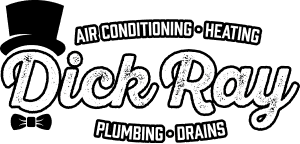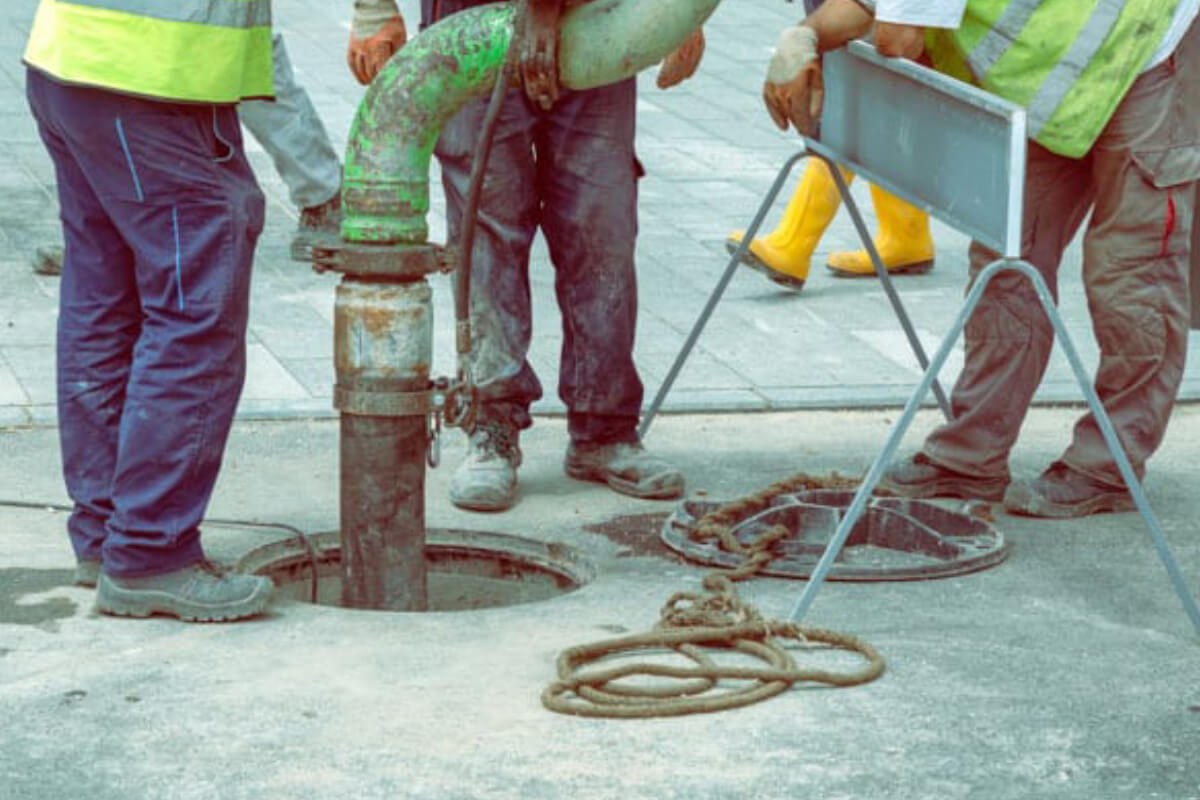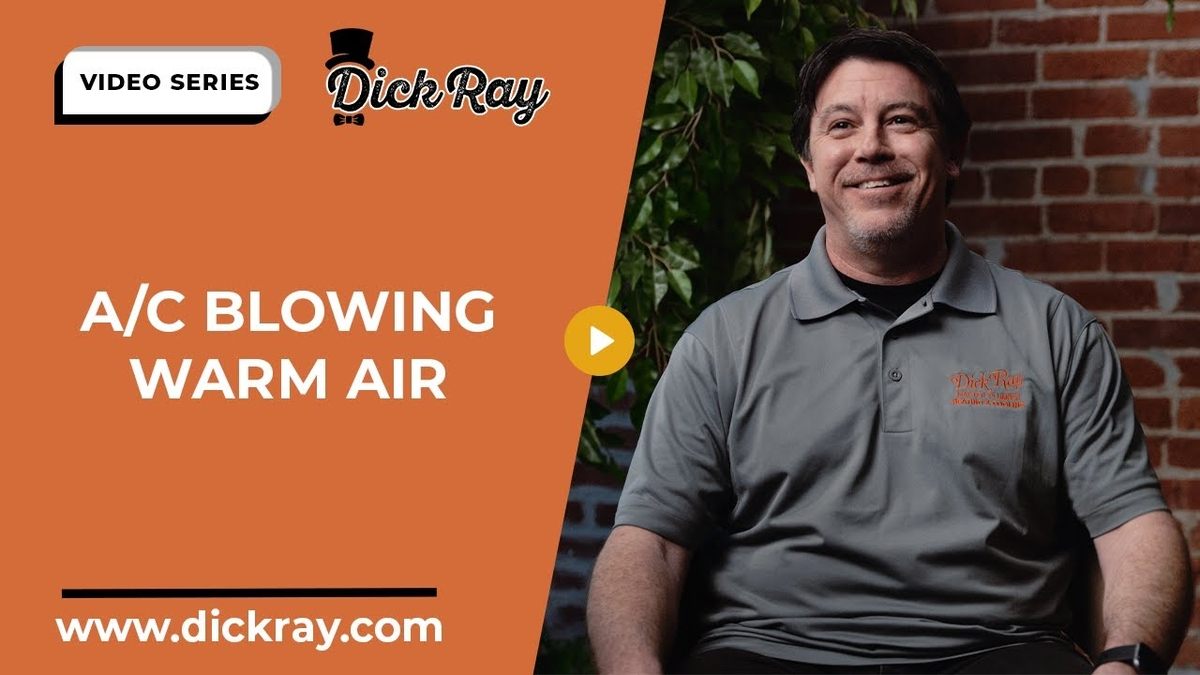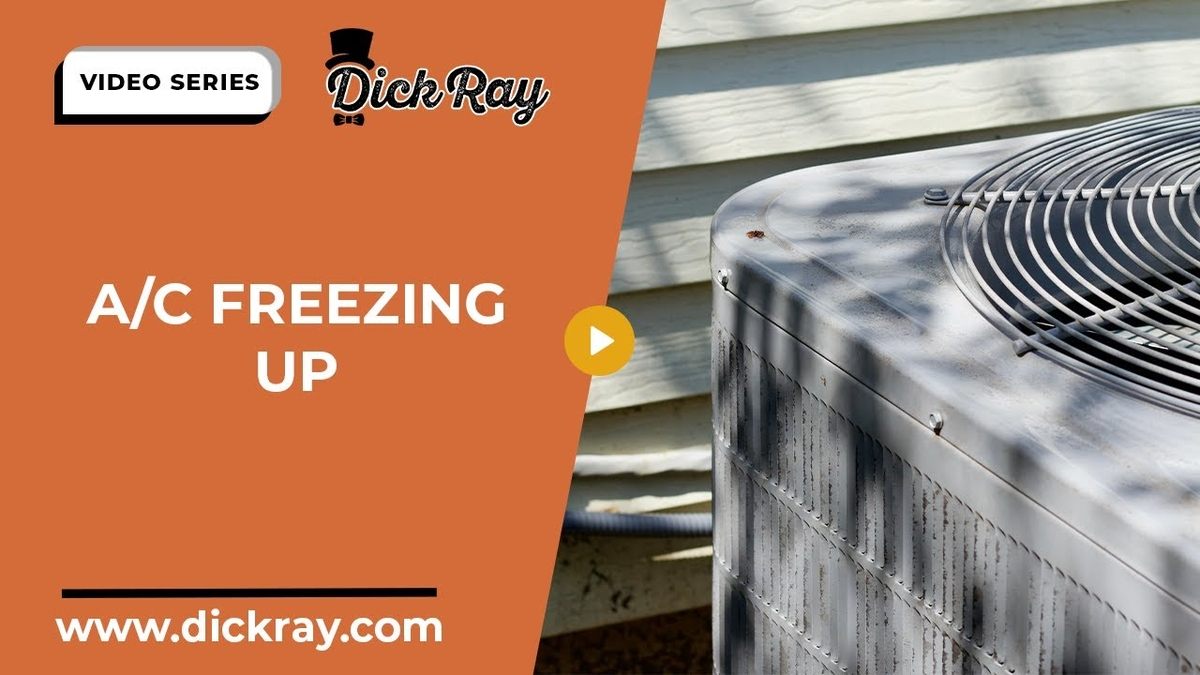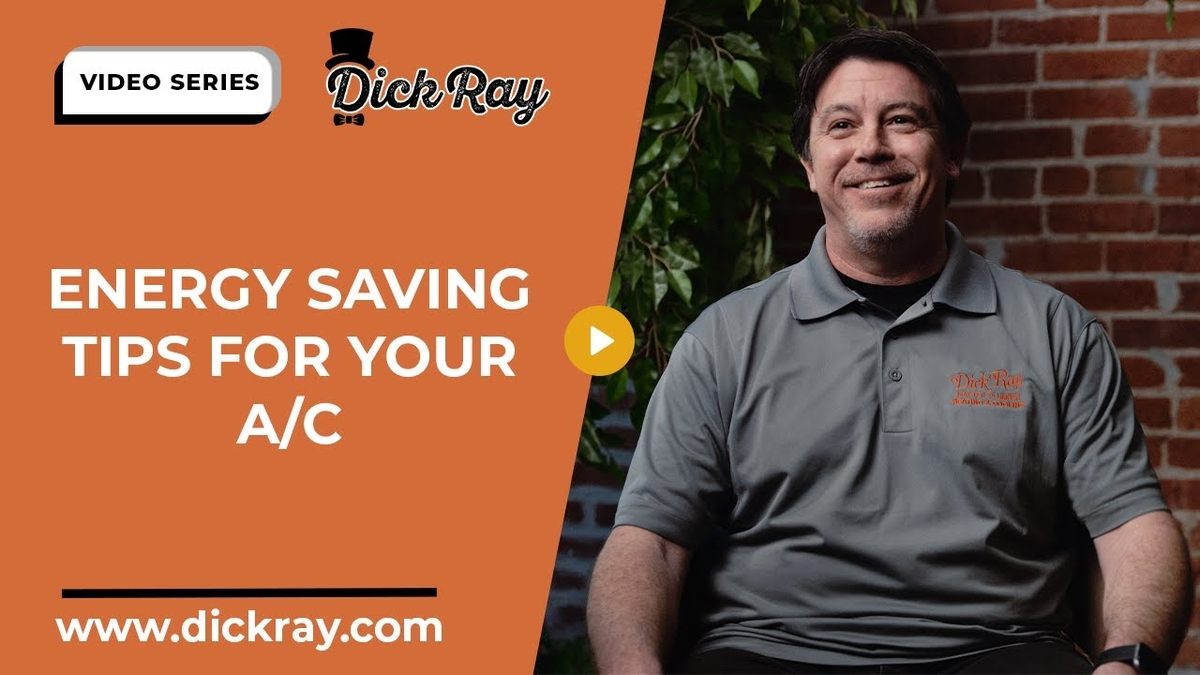Main sewer lines are one of the essential components of a home, yet we never see them. What is a main line? This plumbing line carries the waste from sinks, tubs and toilets from your home to the main sewer, which is generally in front of your house under the street. In this article, we’ll answer some of the most commonly asked questions regarding main line plumbing problems and replacement.
Main Line Plumbing: Frequently Asked Questions
Homeowners rarely give any thought to sewer lines — that is, until something goes wrong. Below are some questions people commonly ask when dealing with sewer line problems.
Is My Sewer Line Clogged or Broken?
Although we cannot usually see the affected area of the sewer line, we can learn to recognize the signs of sewer line damage. Here are 10 telltale broken sewer line symptoms.
1. Backups and Blockages
Sanitary sewer backups typically happen in the lowest drain that is open, and they’re usually the result of a blockage somewhere along the line. If a backup occurs every time you run water in your sink or flush your toilet, chances are the issue is in the main sewer line, since all drains rely on the main sewer line for proper drainage. However, if only one drain is experiencing a backup, it is likely the problem is only affecting that drain.
If you’re experiencing regular backups, this may be a sign of deteriorating or broken sewer lines. If you have your pipes cleaned and are still experiencing backups or blockages, some other factor may be causing the problem, such as channeling, intrusion by tree roots, cracks allowing soil to enter or pipes with a misaligned connection. A video sewer inspection can pinpoint these problems.
2. That Sewer Gas Smell
If you get a whiff of that awful sewer gas stench, this is a definite sign your sewer system has cracked somewhere along the line. A sanitary sewer system needs to be completely airtight, except for the vent stacks coming out of your roof, which allow the sewage to flow downhill. That is why you should never be able to smell sewer gases unless your sewer lines have an opening or crack. Sewer gases are also dangerous for people to breathe, so when you notice the odor, you should call an expert to repair your plumbing pipes and ensure your family’s safety.
3. Mold
Like sewer gases, the growth of mold is another potential sign of a break in your sewer system behind your walls. Certain molds only require a moderately high humidity level to grow, meaning a broken sewer pipe behind a wall can increase the humidity level to a point high enough to cause mold growth. If sewer odors and mold growth are both present in your home at the same time, it is likely a sewage drain pipe has broken. Mold can also represent a health hazard, and when you notice it forming, you should not wait to call for repairs.
4. Slow Draining
Slow draining may be a sign of a blockage that is forming and will eventually cause a backup. If a sink, bathtub or toilet is slowly draining even after the line is clear, you may be experiencing problems like root intrusion, cracks or channeling. If you are attempting to clear a blockage or slow drain, avoid chemical drain cleaners. The chemicals will eat away at the PVC or cast iron pipes, and are also highly toxic.
5. Unusually Lush Grass Patches
Patches of grass that are especially lush and green may be a sign of a sewer line leak underground. A leak from the main sewer line into the soil will provide the nearby grass with more nutrients, which results in grass that appears to be extra healthy and thriving.
6. Indentation Under Pavers or Lawn
Lawns or under pavers that are indented are yet another potential sign of a broken sewer line. If a cracked sewer line is saturating the surrounding soil, the soil may dissipate as a result, causing a tip or indentation in your lawn directly above the main sewer line.
7. Foundation Settlement and Cracks
If the main sewer line underneath your slab foundation is leaky and you fail to address the problem for a long time, this may lead to the development of a void under your foundation or in your yard — which, in turn, may cause foundation issues including cracks, settlement and, in some extreme cases, even sinkholes.
If your house is on a slab and is experiencing any of the above foundation-related issues, a broken, leaking main sewage line may be the full or partial cause.
8. Pooling of Septic Waste in Your Yard
If septic waste is pooling in your yard, this is obviously a sign some part of your septic system has broken. The problem could be clogged drain fields, a cracked main sewer line or a malfunctioning septic tank. More often than not, the broken component is right underneath the pool of sewage.
9. Rodent Infestation
It may come as a surprise, but the presence of rodents may be another indication of a sewer line break. Rats live in city sewers and can make their way into the sewer pipes running through your house. Rats can squeeze through openings or cracks in your sewer system as small as three-quarters of an inch in diameter.
Rodents are notorious carriers and spreaders of many potentially fatal diseases, such as hemorrhagic fever and plague. You can contract certain diseases if an infected rat bites you, or even by inhaling dust contaminated with their droppings or urine.
If you’re suffering from a rodent infestation and have had no luck eradicating them, a video inspection can often identify any places where rats could potentially enter.
10. Insect Infestation
Broken sewer lines can also lead to insect infestations. Palmetto bugs, sewer flies, cockroaches and various other insects can fit through the cracks in your sanitary sewer much more easily than rodents. The small German cockroach can squeeze into a crack the thickness of a dime, and an American cockroach can fit into a space as thin as a quarter.
Cockroaches can be harmful to human health due to the allergens in their saliva and droppings, which can trigger allergic reactions or asthma symptoms. While hiring a pest control service to regularly eradicate these vermin will temporarily fix your problem, if your sewer line is damaged, the bugs will always come back. The only way to permanently solve the issue and ensure your safety is to locate the entry point, which is often a crack in the sewer line.
When Is the City Responsible for Sewer Lines?
The city is responsible for sewage lines beginning at the main underground sewage pipe. This line carries wastewater and waste to municipal treatment plants and various other places, and usually sits under the street and outside your property’s boundary.
That means you, the homeowner, are responsible for the segment of the line that goes from your home to the main sewer lateral underneath the street. So, if you experience any backup, it’s your responsibility to hire a plumber who knows how to clear a main line blockage.
Should I Replace My Main Line?
A qualified plumber can help you answer this question. If you have a main line that experiences backups more than once per year, there may be a more severe pipe issue hiding down in your pipes, in which case it may be a good idea to dig up and repair or replace the problem area. In many cases, however, you can avoid these problems by having your main line snaked once every couple of years. That is especially true if tree roots have entered your sewer line. There is a significant difference in the cost of snaking the pipes vs. digging them up and repairing or replacing them.
Below are some red flags to let you know a pipe replacement is probably the wisest option.
- Long-term issues: If you’ve been dealing with plumbing issues for months or years on end, it is likely enough damage has occurred to necessitate a sewage line replacement. Conversely, if your pipes are fairly young and haven’t been experiencing problems for a long time, unclogging the pipes and regularly maintaining them thereafter may be a better solution.
- Constant clogs: In the vast majority of cases, clogged sinks and overflowing toilets are the result of putting paper towels, kitty litter, cooking grease or other common household items down the drain. But if clogs continue to occur despite not flushing down the wrong things, this may indicate a more severe problem in your sewer line. A main sewer line clog can cost a significant amount of money to repair, especially if you ignore them and allow them to worsen.
- Old pipes: Old pipes, as you might have guessed, fail more frequently than newer ones. If you don’t know the age of your pipes, consider how old your house is. If it dates back more than 50 years, chances are it needs a sewer line replacement.
- Malfunctioning water fixtures: If you’re noticing backups in toilets or sinks or water pooling in the drains in your basement, it may indicate the main line has clogged. Pay attention to see if water coming from one fixture is causing a backup somewhere else on the same floor.
- Large trees: Roots are one of the most common causes of damage to piping systems. If your property has large, mature trees, massive root systems may be encroaching on your sewer pipes. A tree’s root system often extends much farther than its branches aboveground.
- Unusual sounds: When you use your plumbing fixtures, have you ever heard gurgling noises similar to the ones drip coffeepots make when they run out of water? That is another sign of clogged sewer lines.
What Do I Need to Do Before I Have My Sewer Lines Replaced?
If you’ve noticed any of the above red flags, it is highly recommended you hire a sewer camera inspection service to determine that exact issue occurring in your sewer line.
By being able to see the problem area with a small, high-definition camera, professional technicians can best diagnose the problem affecting your pipes and solve the problem efficiently, saving you time and money.
You Can Count on Dick Ray Master Plumbing to Care for Your Plumbing System
If you’re interested in repairing your pipes — or having them maintained to avoid any unpleasant plumbing issues — Dick Ray Master Plumbing is the service you can trust to treat your pipes. With roots in Kansas City that date back over 150 years, you can be certain our team will do our job well.
Whether you need a completely new plumbing system or just need a leaking pipe repaired, we can evaluate your situation and offer a quick, reliable solution. If you’re having plumbing issues, we understand you would like it repaired as fast as possible, which is why we perform our services promptly.
We offer several plumbing- and sewer-related diagnostic and repair services, including the following.
Locating the source of sewer odors: Although many plumbers lack the experience and skills to locate the course of gas leaks and smells, we’re highly proficient at it. Using techniques we’ve developed over the last six decades, we can find where your odor is coming from — even those under soil or concrete.
- Drain and sewer repairs and cleaning: The services we provide are more thorough than most other sewer repair companies in our area. We carry heavy Spartan rooters in a variety of sizes to appropriate for different kinds of work — larger, heavier machines are more powerful and are used to cut roots from your main sewer. Our smaller machines, on the other hand, feature more flexible cables and can maneuver around the tight turns of your tub or shower drains. But at Dick Ray Master Plumbing, we don’t just have the necessary equipment — we have the knowledge and experience to open your drain quickly and ensure you enjoy improved water flow for as long as possible.
- Sewer camera pipe inspection: If we determine there is a severe problem with the sewer line under the floor of your basement of the line that runs to the city sewer, we will suggest you allow us to use our sewer inspection video camera to inspect the sewer line from your home to the juncture where the line connects to the city sewer system. Using the sewer camera, we can examine the inside of the entire sewer system. When we spot a break or other problem in your system, we stop the camera, walk out to the yard and use a receiver to detect the radio signal sent by a transmitter that is attached to our sewer camera. Video inspections are accurate enough to determine the precise depth of sewer pipes, as well as the severity of the issue that is affecting them.
- Toilet repair or replacement: If you have a toilet that leaks, phantom flushes or won’t stop running, we have the skills and resources to rebuild your toilet or replace it with brands we recommend, such as Toto, Kohler or Gerber.
We serve Mission Hills, Overland Park, Leawood, Prairie Village, Merriam, Olathe, Mission, Westwood, Fairway, Shawnee, Lenexa, Stillwell, Roeland Park, Bonner Springs, Lee’s Summit and Kansas City in both Missouri and Kansas.
To schedule an appointment or find out more about our plumbing services, contact us by calling (913) 214-8770.
